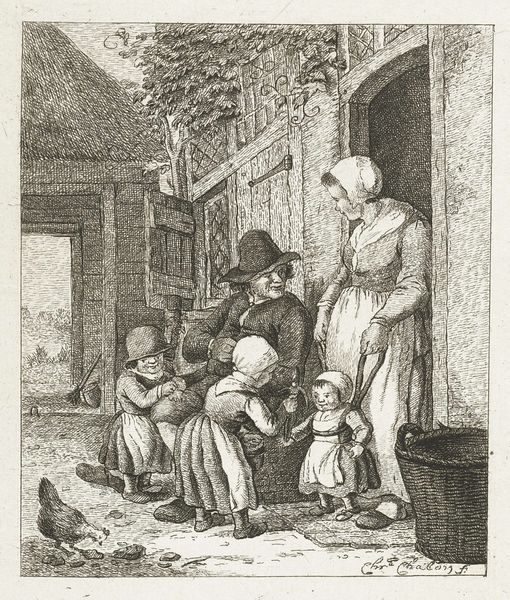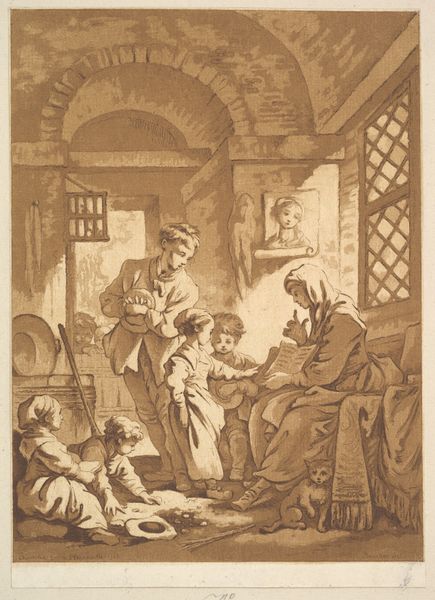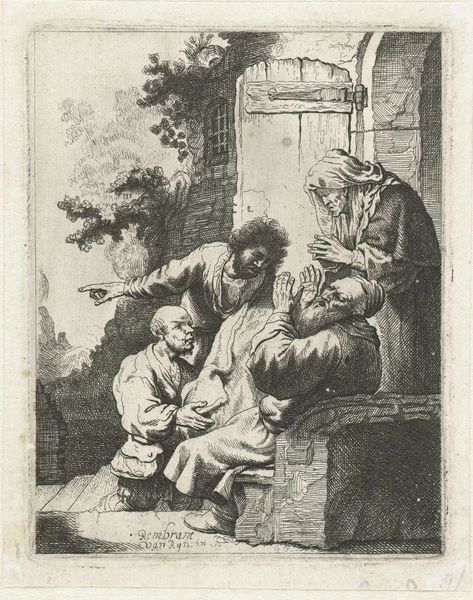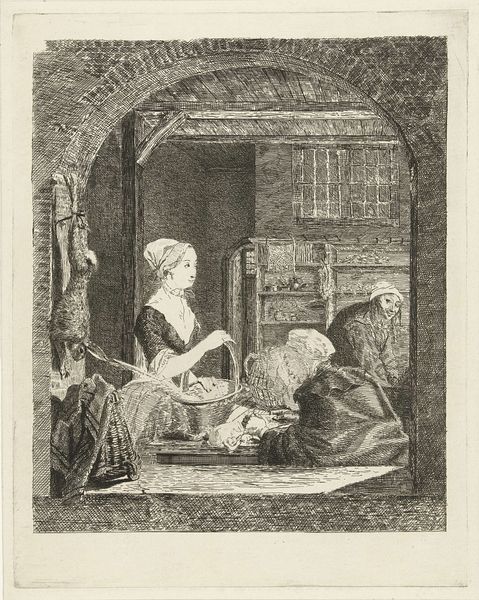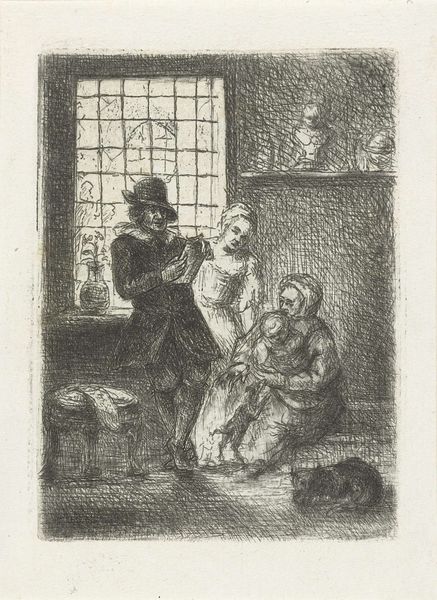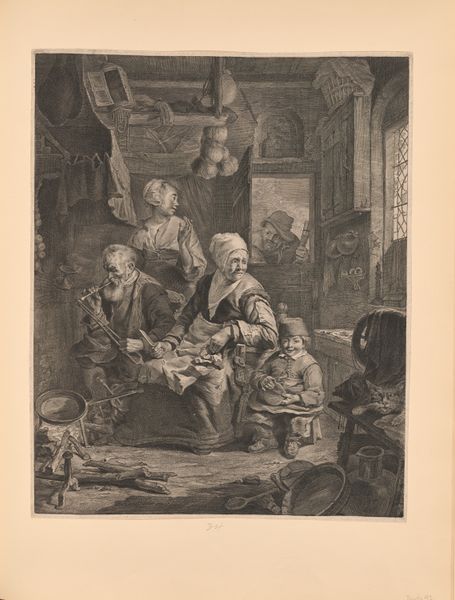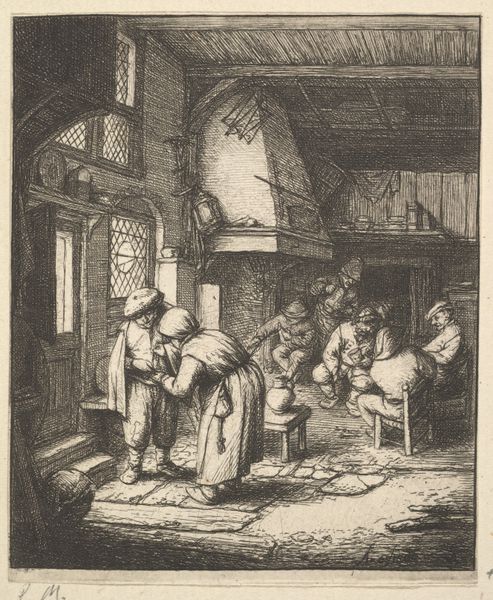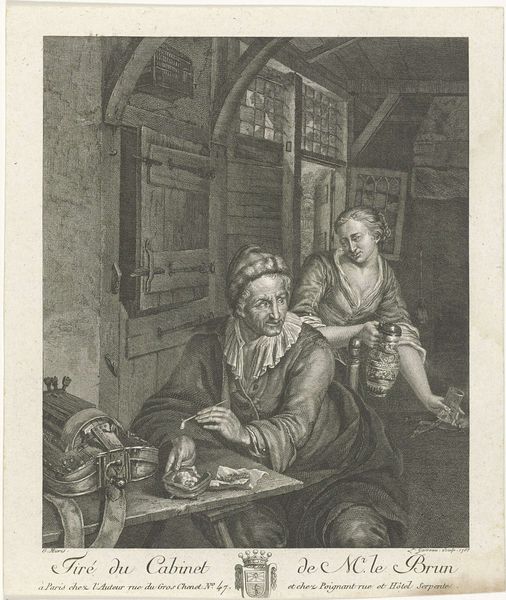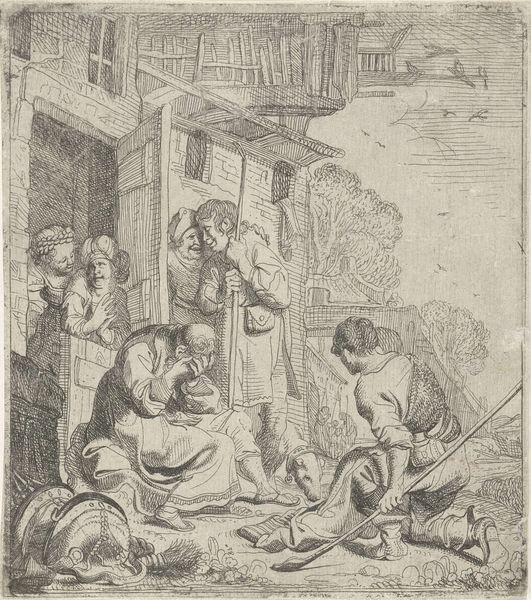
Dimensions: height 183 mm, width 139 mm
Copyright: Rijks Museum: Open Domain
Editor: Here we have "Boerengezin," created sometime between 1758 and 1808 by Christina Chalon. It's a drawing and print using ink, pencil, and engraving. My first thought is how it depicts such an intimate domestic scene, but also includes the slightly sinister-looking father peering in. What cultural symbols do you see at play here? Curator: That father figure, observing rather than participating, strikes me first. Is he protecting, judging, or simply detached? This distance carries a symbolic weight. Note also how light falls primarily on the mother and children – they are illuminated, suggesting perhaps purity, domesticity, and generational legacy. Does this resonate with ideas you’ve encountered regarding 18th-century familial roles? Editor: I see what you mean about the light. It's like the outside world, with the father, is literally in the shadows. It reminds me a little of paintings by artists like Millet. Curator: Precisely! Think about genre paintings during this period and earlier: what symbols were often associated with depictions of peasants and rural life? This idealized versus the often harsh reality creates a fascinating tension. Consider too the tools scattered on the floor versus the neat baskets; do they represent gender roles and labor? Editor: So, you’re saying the tools and baskets act almost as visual shorthands for the division of labor, and maybe even societal expectations of men versus women at that time? Curator: It's about more than just "what they did". Notice that the basket closest to us overflows with what appears to be bread. Think of the biblical and secular meaning of "bread" as life. Notice too the open door, beyond which is verdant nature -- the realm of male work perhaps, but also life, fertility and, most of all, a possibility of redemption. Editor: Wow, I hadn’t considered the idea of the open door representing the possibility of change. That’s really fascinating. Curator: Indeed. And remember how Chalon’s choice to work with ink, pencil and engraving offers unique insight, conveying depth but leaving areas for individual reflection, much like cultural memory itself.
Comments
No comments
Be the first to comment and join the conversation on the ultimate creative platform.
